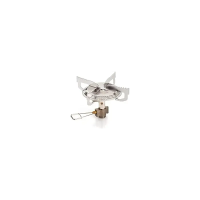4. Installation
PNEG-2381 2000 Series U-Trough Bin Sweep Auger Unload System (72' - 78') 43
Because synchronous belts are particularly sensitive to being pinched or trapped between opposite
sprocket flanges, sprockets must be installed so that there is clearance between the edge of the belt and
the flanges, on both sides. If clearance between opposite sprocket flanges and the edges of the belt is
present, parallel misalignment does not need to be quantified and added to the angular misalignment.
Rules of Thumb
Maintenance technicians may not always find it practical or possible to accurately calculate the total
misalignment in a system while determining if it is in acceptable alignment. It is also difficult to visualize
small fractions of an angle such as 1/2° and 1/4°. These can be more clearly illustrated with the following
rules of thumb:
For V-belt drives:
1/2° angle = approximately 1/10" per foot of distance traveled.
For synchronous, 60° angle, and V-ribbed drives:
1/4° angle = approximately 1/16" per foot of distance traveled.
These rules can be used to estimate the amount of angular and parallel misalignment visually rather than
having to calculate actual numerical values.
For example, in order for a synchronous belt drive to be within the belt manufacturer’s recommendations
for angular misalignment, the distance from the outside surface of the sprocket to the straightedge should
not differ by more than 1/16" across a 12" diameter.
For a sprocket with a 6" diameter this difference should not be more than 1/32". If the difference is greater
than this, or the calculated angle is in excess of the maximum recommended value of 1/4°, the drive
should be realigned.
Conclusion
Misalignment can be an obstacle for satisfactory synchronous and V-belt drive performance. In many
cases, it is not easily detectable in complex drive applications. Maintenance technicians should also check
related components, such as brackets and platforms, for proper design and placement. These parts must
be strong enough to withstand the peak forces exerted by the belt drive without bending or flexing.
Additional Resources
Gates Belt Preventive Maintenance and Safety program provides user tips ranging from inspection to
installation of V-type and synchronous belt drives. Also included is information on reducing downtime,
controlling parts replacement costs and increasing energy savings. To schedule a free belt preventive
maintenance seminar at your facility, download a copy of Gates 48-page “Belt Drive Preventive
Maintenance and Safety” manual, or sign up for Gates free weekly “Belt Tips” email service, go to
www.gates.com/beltpm
.
For additional information and a preventive maintenance manual on Gates clean running, Poly Chain
®
GT
®
2 synchronous belt drives for food handling systems, go to www.gates.com/stainless.
To locate a Gates power transmission distributor in your area, go to www.gates.com/distributors
.
To schedule a visit with a Gates Industrial sales representative, call 1-800-777-6363.
For technical assistance from Gates Power Transmission Product Application engineers,
call 303- 744-5800, or email ptpasupport@gates.com
.

